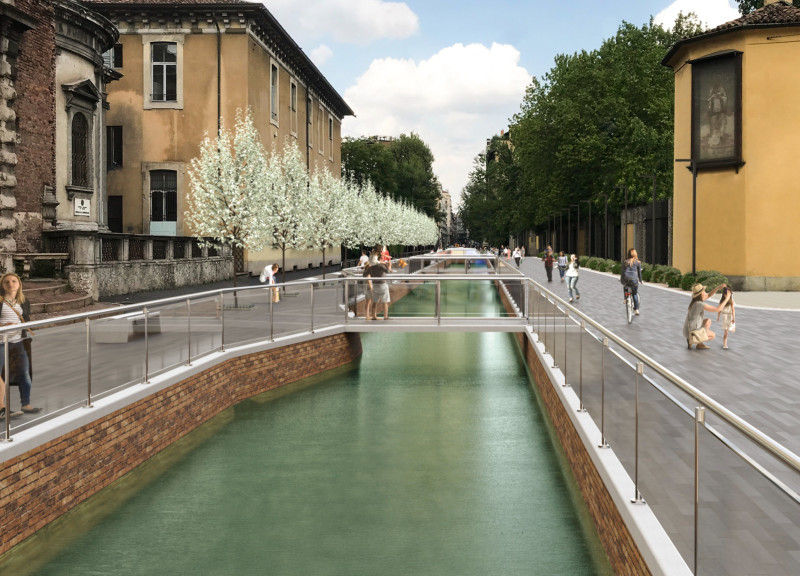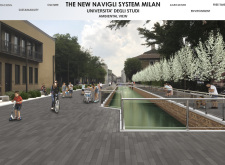5 key facts about this project
The New Navigli System in Milan aims to bring new life to the city's historic canals. This initiative focuses on improving connections between essential public spaces such as the university, parks, and healthcare facilities. Its design concept seeks to promote sustainable urban development while fostering social interaction and accessibility, ensuring the Navigli canals remain a vital part of everyday life.
Site Condition Analysis
A comprehensive site condition analysis highlights several challenges within the urban landscape. Issues include limited pedestrian and cycling routes as well as insufficient visibility of the university and nearby park. By addressing these challenges, the project seeks to enhance the urban atmosphere. The approach focuses on connecting different elements in the city and encouraging community engagement through thoughtful design.
Integration with Key Public Spaces
The Via Francesco Sforza area serves as a critical point in this design. It contains important public buildings, including the Polyclinic Hospital and various educational institutions. Reopening this section of the Navigli is essential for reshaping the urban identity of Milan. By improving access to these spaces, the design aims to promote interactions among different user groups, creating a more welcoming environment.
Guastalla Garden Valorization
The valorization of Guastalla Garden plays a significant role in the overall project. This historic public garden is reviewed to enhance its layout and functions while maintaining its historical importance. The redesign introduces educational spaces and areas for relaxation, making the garden more appealing to visitors. This effort seeks to ignite public interest in this significant green space within the city.
Interconnected Pathways and Accessibility
The design emphasizes creating interconnected pathways to improve pedestrian movement and support various activities. These pathways are strategically placed to encourage social interaction and ease of travel between different areas. With an emphasis on accessibility, the project aims to enhance the usability of the urban environment for all.
The design incorporates specific materials to serve both functional and aesthetic purposes. Steel structures provide protection along the Naviglio, ensuring durability. Laminated glass enhances safety features, while porcelain stoneware slabs are chosen for their sustainable qualities. These choices reflect a commitment to modern urban design that respects the historical context of Milan.






















































